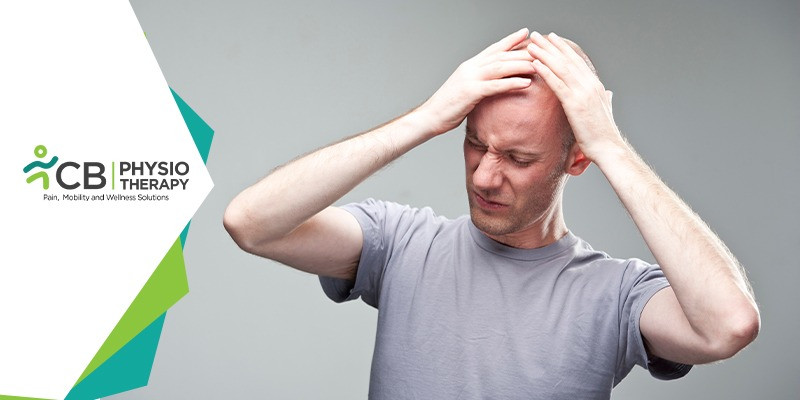Cervicogenic headaches can give you a troublesome time and not let you concentrate on your work due to the excruciating head pain. Though cervicogenic headaches can be treated by drugs but physiotherapy treatment is one of the best-known solutions. It is safely treatable by specific physiotherapy techniques that address the neck, upper back, joints, and muscles. Cervicogenic headaches can cause pain, limited neck movements, dizziness, or nausea. The physiotherapist assesses the spine and offers treatments that can help to decrease pain and improve mobility. In this blog, we will discuss cervicogenic headaches and their physiotherapy management.
Neck Anatomy and Cervicogenic Headache:
The neck is comprised of 7 cervical vertebrae stacked one on the other. In between these bones are spongy and soft intervertebral discs with joints on either side of the neck. The cervical vertebrae protect the spinal cord and allow the neck to move in flexion, extension, rotation, and side bending. Upper cervical vertebrae help support the skull. There is a joint on either side of the cervical level that connects to the occiput of the skull and allows the motion to occur. From the sub-occipital area several nerves and muscles that support and move the head, travel from the neck, through the sub-occipital area, into the head. Headaches and pain can be due to these nerves and muscles. Cervicogenic headache has several symptoms like pain on one side of the upper neck that radiates to the temple, forehead, or eye, pain in one side of the face or cheek reduced range of motion in the neck, pain on both sides of the back of the head, Pain in the back of the head that radiates to shoulder, dizziness, nausea, sensitivity to light or sound. Symptoms can often be triggered by certain movements or during sustained postures of the neck and can last for several hours to days.Physiotherapy Management
The physiotherapist conducts a proper assessment and evaluation by palpating the neck and skull and recording the neck's range of motion, and strength. After the evaluation treatment plan is designed to treat the Cervicogenic headache. The physiotherapist may use different interventions for the treatment of Cervicogenic headaches. The interventions include:1: Ice therapy: Ice therapy may be applied to the neck and skull to help decrease pain or inflammation.
2: Heat therapy: Heat therapy is used to increase blood circulation, and relax tight muscles before performing neck stretches.
3: Traction: Traction can be given manually by hand or mechanically with the help of a machine, it helps to decrease pain due to cervicogenic headache and also decompresses the neck's discs and joints to allow improved neck movement. Even joint mobilizations can be performed to improve neck motion and decrease pain.
4: Transcutaneous Electrical Stimulation (TENS): Transcutaneous Electrical Stimulation on the neck muscles helps to decrease pain and improve headache symptoms.
5: Vestibular Therapy: Cervicogenic headaches can cause vertigo or dizziness, and for this vestibular therapy can be beneficial. This therapy involves performing specific neck, head, and gaze stabilization exercises to improve the way the vestibular system functions.
6: Massage: Massage helps to loosen the tight muscles which causes limitation of the neck movement thus causing headache pain. Sub-occipital release technique can be performed to loosen the muscles that attach the skull to the neck, allow improved motion, and decrease nerve irritation.
7: Exercise: Exercises done to improve neck motion and decrease pressure on cervical nerves include cervical flexion, side bending, rotation, and side bending cervical retraction. These exercises are done slowly, without any sudden or jerky movement. After the movement, slight overpressure is applied with hands to each neck stretching movement, and at the end, range stretches may be held for up to 1 minute.
8: Postural Correction: Postural correction is done to prevent the pinching of the nerves in the suboccipital area and upper cervical spine area. Strategies used include the use of a supportive neck pillow when sleeping, a lumbar roll while sitting, and preventing slouched posture. Kinesiology taping is used to improve correct posture by increasing tactile awareness of the back and neck position.
Through Physiotherapy management you can be assured of a quick and safe way to get pain relief and return to your level of activity.

